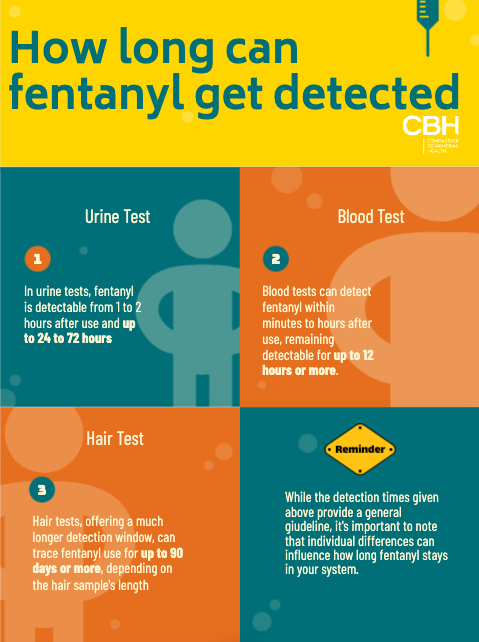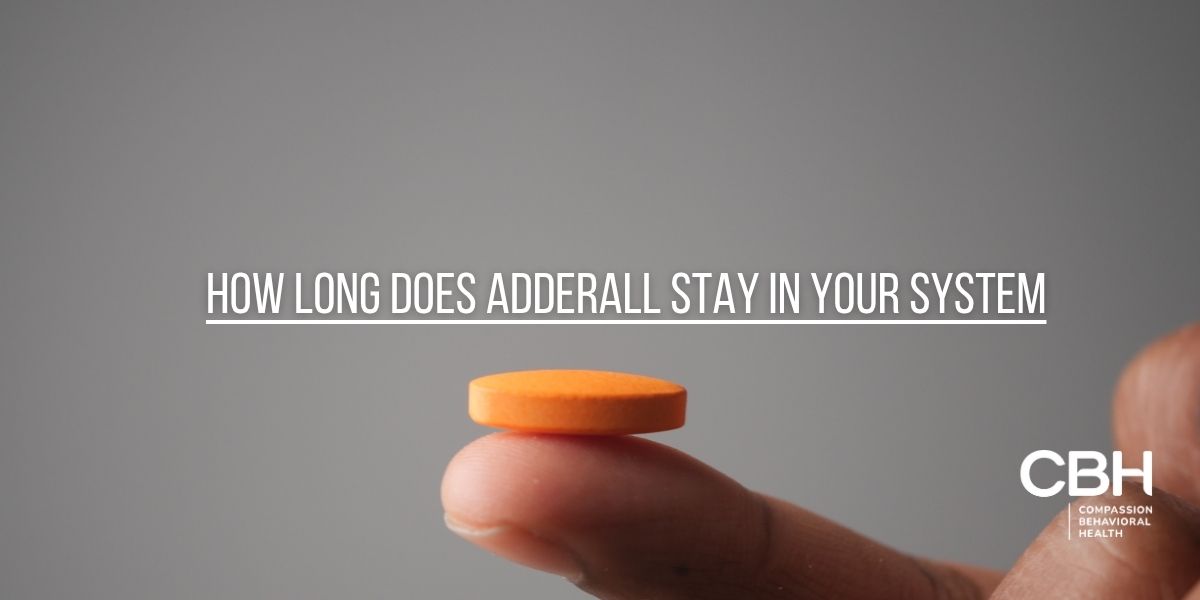Fentanyl is a potent opioid medication that is commonly used for pain management. However, it is also a drug that is abused recreationally due to its highly addictive properties. If you have recently used fentanyl or are considering using it, you may be wondering how long it will stay in your system.
In short, fentanyl detection times vary by test type. In urine tests, fentanyl is detectable from 1 to 2 hours after use and up to 24 to 72 hours, influenced by dosage and frequency of use. Blood tests can detect fentanyl within minutes to hours after use, remaining detectable for up to 12 hours or more. Hair tests, offering a much longer detection window, can trace fentanyl use for up to 90 days or more, depending on the hair sample’s length.
Understanding the metabolism and detection times of fentanyl can help you make informed decisions about its use and manage any potential risks. In this article, we will explore the various factors that can influence how long fentanyl stays in your system, as well as discuss the risks associated with its use and potential overdose.
Understanding Fentanyl and Its Uses
Fentanyl is a synthetic opioid that is similar to morphine but is much more potent. It is typically prescribed by medical professionals to manage severe pain, especially in patients who have undergone major surgeries or who are experiencing chronic pain. In a medical setting, fentanyl is administered via injection, transdermal patch, or lozenges.
The Medical Purpose of Fentanyl
When used medically, fentanyl is carefully prescribed and monitored by healthcare providers. It is used to alleviate pain that is not adequately managed by other less potent pain medications. Fentanyl works by binding to opioid receptors in the brain and spinal cord, blocking pain signals and producing a sense of relaxation and euphoria in the users.
Patients who receive fentanyl for pain management often have conditions such as cancer, where the pain can be excruciating and difficult to control. Fentanyl provides these patients with much-needed relief, allowing them to function and improve their quality of life. The controlled administration of fentanyl in a medical setting ensures that patients receive the appropriate dosage and are closely monitored for any adverse effects.
In addition to its use in managing pain, fentanyl is also used during anesthesia for surgical procedures. Its fast-acting and potent properties make it an ideal choice for inducing and maintaining anesthesia. By carefully titrating the dosage, anesthesiologists can ensure that patients remain unconscious and pain-free throughout the surgery.
The Recreational Use of Fentanyl
Unfortunately, fentanyl is also abused for its euphoric effects. In recent years, there has been a significant increase in the illicit use of fentanyl, often mixed with other drugs such as heroin or cocaine. The potency of fentanyl makes it extremely dangerous, as even small doses can lead to respiratory depression, overdose, and death.
Recreational users who seek out fentanyl are often looking for a more intense high than what they can achieve with other drugs. However, the risk of using fentanyl recreationally is incredibly high. Illicitly produced fentanyl can vary greatly in potency, and users may unknowingly consume a lethal dose. The mixing of fentanyl with other drugs further increases the risk, as the combination can have unpredictable and potentially deadly effects on the body.
Law enforcement agencies and public health organizations are working tirelessly to combat the illicit use of fentanyl. Efforts include increasing awareness about the dangers of fentanyl, implementing stricter regulations on its production and distribution, and providing resources for addiction treatment and support.
It is crucial for individuals to understand the risks associated with fentanyl and to seek help if they or someone they know is struggling with substance abuse. Education, prevention, and access to proper healthcare are essential in addressing the challenges posed by fentanyl abuse.
The Metabolism of Fentanyl
Once fentanyl enters the body, it undergoes various metabolic processes, ultimately determining how long it will stay in your system. Understanding how the body processes fentanyl can provide insights into its detection times in different tests.
How the Body Processes Fentanyl
After administration, fentanyl is rapidly absorbed and distributed throughout the body. It is then metabolized by the liver into inactive compounds that are eventually eliminated from the body via urine, feces, and sweat. The primary metabolite of fentanyl, norfentanyl, is often used as a marker to detect its presence in the body.

Fentanyl Detection Times in Different Tests
Depending on the type of test used, fentanyl can be detected in the body for varying periods of time. Let’s take a closer look at the detection times in different tests commonly used in drug screenings.
Fentanyl in Urine Tests
Urine tests are a common method for detecting fentanyl use. Fentanyl can be detected in urine within 1 to 2 hours after use and can remain detectable for up to 24 to 72 hours, depending on various factors such as dosage and frequency of use.
Fentanyl in Blood Tests
Blood tests can also be used to detect fentanyl in the system. Fentanyl is usually detectable in the blood within minutes to hours after use and can be detected for up to 12 hours or longer.
Fentanyl in Hair Tests
Hair tests can detect fentanyl use over a much longer period compared to urine or blood tests. Fentanyl can be detected in hair samples for up to 90 days or even longer, depending on the length of the hair sample collected.
3 Key Factors That Affect How Long Fentanyl Stays in Your System
While the detection times given above provide a general guideline, it’s important to note that individual differences can influence how long fentanyl stays in your system.
- Dosage and frequency of use
- Individual metabolic rate
- Overall health and lifestyle factors
Dosage and Frequency of Use
Higher dosages and more frequent use of fentanyl can lead to longer detection times. Additionally, chronic use of fentanyl can result in its accumulation in the body, prolonging its presence in various tests.
Individual Metabolic Rate
Each individual’s metabolic rate is unique and can affect how quickly fentanyl is processed and eliminated from the body. Factors such as age, weight, and overall health can influence metabolic rate and, subsequently, the detection times of fentanyl.
Overall Health and Lifestyle Factors
General health and lifestyle factors, such as liver and kidney function, hydration levels, and physical activity, can also play a role in how long fentanyl stays in your system. Healthy individuals with well-functioning organs may metabolize and eliminate fentanyl more efficiently.
The Risks of Fentanyl Use and Overdose
While fentanyl can provide essential pain relief when used as prescribed, its misuse and abuse carry significant risks.
Short-Term and Long-Term Effects of Fentanyl
In the short term, fentanyl use can cause drowsiness, confusion, slowed breathing, and even coma. It can also lead to dependence and addiction. Long-term use of fentanyl can have severe consequences, including respiratory depression, organ damage, and even death.
Recognizing and Responding to Fentanyl Overdose
Fentanyl overdose is a life-threatening emergency that requires immediate medical attention. Some signs of overdose include pinpoint pupils, slowed or stopped breathing, unresponsiveness, and loss of consciousness. If you suspect someone has overdosed on fentanyl, call emergency services right away and provide any necessary first aid, such as rescue breathing or administering naloxone if available.
Conclusion
In summary, the length of time fentanyl stays in your system can vary depending on factors such as dosage, frequency of use, individual metabolism, and overall health. Fentanyl can be detected in various tests, including urine, blood, and hair, with detection times ranging from hours to several months. However, it is crucial to remember that even after the drug is no longer detectable, the risks associated with fentanyl use and potential overdose remain significant. If you have concerns about fentanyl or need assistance with opioid misuse, consult a healthcare professional or addiction specialist for appropriate guidance and support.
Fentanyl Addiction Treatment at CBH
At Compassion Behavioral Health, we offer a comprehensive and empathetic approach to fentanyl addiction treatment. Our dedicated team of experts understands the complexities of opioid dependency and focuses on providing personalized care tailored to each individual’s needs. Call us today to learn more about our treatment programs.



